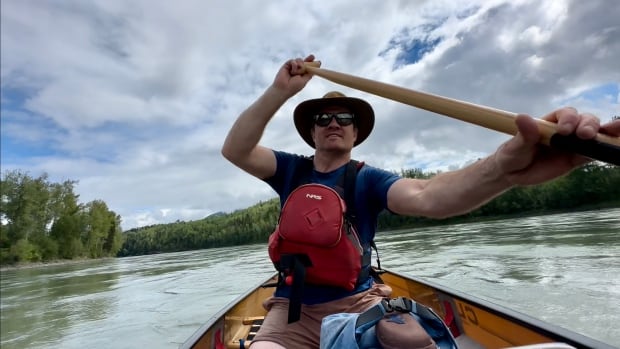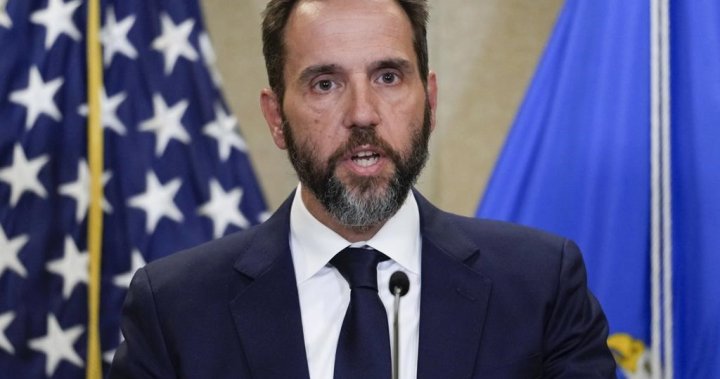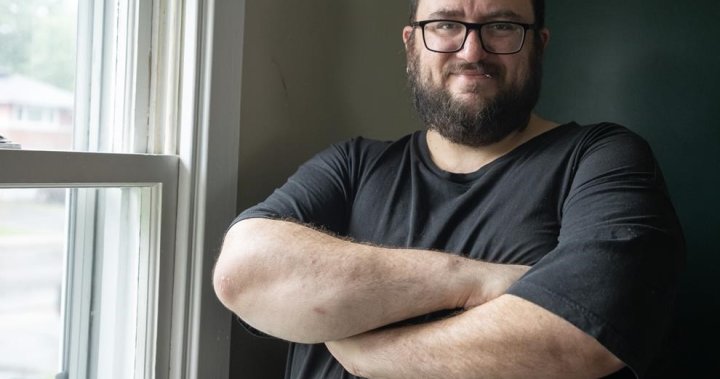
Paddling solo for 174 kilometres down the Kispiox and Skeena rivers in northwestern British Columbia each summer, NDP MP Taylor Bachrach encounters rapids, storms, grizzly bears and a spectacular landscape in his unusual effort to connect with constituents.
It’s nothing like the summer BBQ circuit that occupies many of his parliamentary colleagues once the House of Commons rises. Bachrach said that, for him, it’s a chance to celebrate the wilderness with the people who sent him to Ottawa.
“I think we have a lot of opportunities for meetings under fluorescent lights in boardrooms … and that’s important. But when you sit on the bank of the river, and you talk about this place we call home, yeah, there’s something extra special about it,” he told CBC News.
With a population just under 90,000 (a third of it Indigenous) spread across more than 325,000 square kilometres, Skeena—Bulkley Valley is one of Canada’s most thinly populated federal electoral districts.
It’s also home to one of Canada’s most beautiful and isolated landscapes, where communities still see the rivers as the lifeblood of their communities.

“Each year I drive up and down the highway probably 50 or so times and I’m always looking at the river and thinking about years gone by,” Bachrach said.
“A couple years ago, I had this idea that I could visit those communities the old way, by river, and that it would be a neat way to connect with folks.”
Bachrach said he’s always looking to bring a little bit of himself to his role as an MP, and since canoeing has always been a passion, a tradition was born.
His first journey was in 2022; the summer of 2024 was his third. Each year he puts into the Kispiox River, a tributary of the Skeena about 25 kilometres north of Hazelton, and pulls out five days later in Terrace.
Unexpected visitors
Bachrach does the trip unassisted, carries everything he needs in his canoe, camps along the river’s edge and visits the villages along his path that now expect his arrival every summer.
This summer, he visited Anspayaxw (Kispiox), Sik E Dakh (Glen Vowell), Gitanmaax, Gitsegukla, Gitwangak and Gitaus, a Kitselas First Nation community.
“There are folks who spend a lot of time on the river who know that I do this trip and I bump into some of the same people every year that I’ve done it,” he said. “But of course, there’s always surprises.”
Bachrach’s first night camping this summer was marred by heavy rain. He said he put out a call to let people in Kispiox village know he was coming and was warned that a big grizzly bear had been spotted eating salmon near his planned campsite.

“Folks from the village were coming down throughout the night to check on me, which I really appreciated. Luckily, the bear didn’t show up and I didn’t have any issues,” he said.
He wasn’t so lucky last year.
“I was camped right near the confluence of the Kitseguecla River and the Skeena,” he said. “And it’s a spot where there are a lot of bears that are pretty active eating fish.
“In the middle of the night, something woke me up and I put on my headlamp and opened the door of my tent and there was a young grizzly bear snooping around.”
Bachrach said he kept the bear spray holstered, managed to scare the bear off with “some stern words” and spent the rest of the night watching out for its return.
“It’s the bear’s home and I’m visiting, so I try to keep a respectful outlook on the situation,” he said.

Connecting with Indigenous peoples and their history, Bachrach said, is always a highlight of his summer trips down the Skeena.
This year he stopped near Kitselas Canyon to hike up to see the petroglyphs, rock carvings left by Indigenous people in the area thousands of years ago.
It was a “really powerful spot reflecting the long history of the Tsimshian people,” he said.
On his way down the cliffs, he said, he met members of the Kitselas First Nation fishing in the river and spoke with them about issues important to them, particularly the state of salmon stocks.
“There are people who depend on salmon and there are a lot of issues around the conservation and the rebuilding of wild salmon stocks in the Skeena, but not just the Skeena … right across British Columbia,” he said. “So that always comes up.”

Bachrach said he also got to see a father from a First Nation community take his son out for his first fishing trip, and was given some salmon to keep him fed along his journey.
“It brings me a lot of joy and it’s something different in terms of the rest of the role, which involves a lot of flying back and forth across Canada and … sitting in the House of Commons,” he said.
“It’s a tradition that I think I’m going to keep up over the years as long as I can, and each year do it a little bit differently and try to connect in some different ways.”








